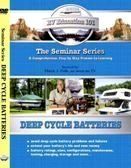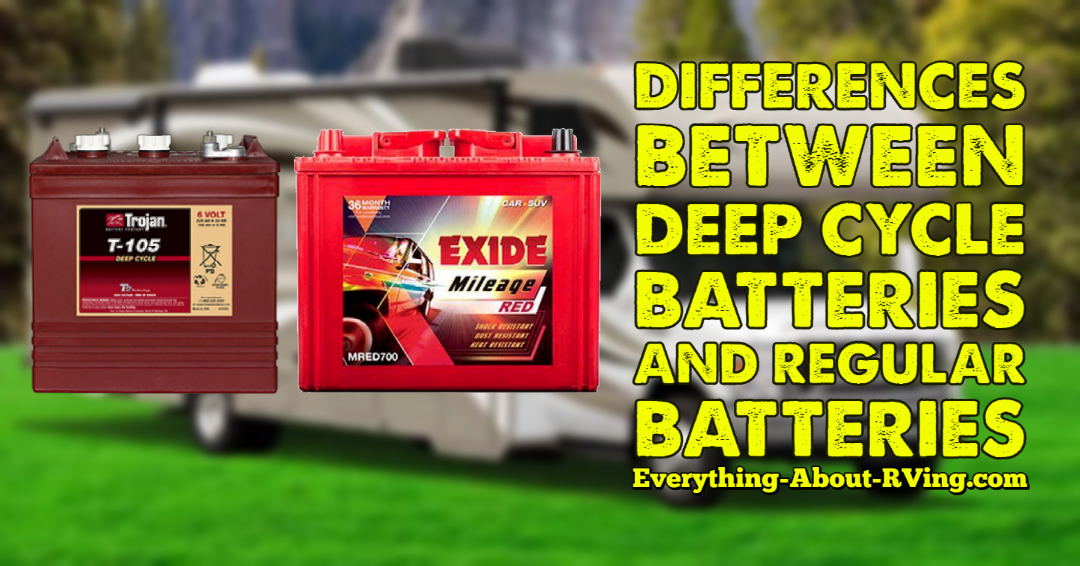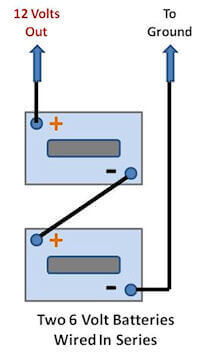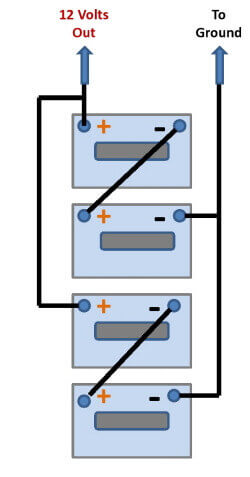- Home Page
- RVing Tips & Tricks
- Deep Cycle Batteries
Differences Between Deep Cycle Batteries and Regular Batteries
"One of the most important factors in extending the life of Batteries is proper care and maintenance"
By Alan Wiener
Editor of Everything About RVing.com
You would be surprised at the number of questions I receive monthly regarding RV House Batteries. So many RVers are confused about the difference between a deep cycle battery and standard battery.
I am going to give you an explanation of the differences without getting too technical. There are three types of batteries that we are going to discuss here. I will give you the pros and cons of using them to power the house portion of your RV. What these batteries are used for is dictated on how they are constructed.
Starting or Cranking Battery
Just as it name implies it is a battery that is designed to crank over an engine to get it started. It provides a powerful short burst of energy and is not designed to provide power for a long period of time. It is also not designed to be discharged and recharged often; the life span of this battery will be greatly reduced if it is used to power the 12 volt system of an RV. It will also not provide power for as long as a Deep Cycle Battery.
RV/Marine "Deep Cycle" Battery
This is a cross between a Cranking and true Deep Cycle Battery. It can provide enough short burst energy to start the engine and it can provide power to the house portion of the RV for longer periods of time than a Cranking Battery but not as long as a true Deep Cycle Battery. It can also be discharged and recharged more often than a Cranking Battery but will not last as long as a true Deep Cycle Battery. Again I would not recommend this battery to power the house portion of your RV.
True Deep Cycle Battery

Trojan T-105 6 Volt Battery
These batteries (Like the Trojan T-105 pictured above) are designed to provide a consistent power for a longer period of time. They are definitely not designed to crank over an RV's engine. They can be charged and discharged more often and last longer than either the Cranking or RV/Marine Batteries when it comes to powering the 12 volt accessories in an RV.
Most RV Experts and RVers agree that 2 six volt Deep Cycle Batteries hooked up in series (see Picture Above) will provide power for longer than 1 twelve volt Deep Cycle Battery.
Depending on the size and use of the RV some RVers have 4 Six Volt Deep Cycle Batteries hooked in parallel(pictured above), that will theoretically provide this low level power for twice as long as 2 six Volt Deep Cycle Batteries hooked up in series. This is especially important if you are going to be doing a lot of boondocking (camping where electricity is not available).
If your RV is equipped with a Solar Charger, it will also extend the length of time that this power will be available to you. If your RV is equipped with a generator, you can also run the generator to refresh these batteries.
One of the most important factors in extending the life of a Deep Cycle Battery is proper care and maintenance. RVing expert Mark Polk has made an excellent video outlining the proper care and maintenance of Deep Cycle Batteries, following his instructions you will be able to ensure that your RV's Deep Cycle Batteries last as long as they should. This video can be downloaded to your computer instantly. There is more information about this great video below.

Deep Cycle Battery Care & Maintenance: Let RV Expert Mark Polk
walk you through the step-by-step process to understanding lead acid batteries,
battery ratings, battery types, sizes and configurations, battery maintenance,
testing, charging, storage and more. Whether you own an RV or a boat you can
watch this DVD as often as you need, making battery care and maintenance simple
to do and easy to understand
Do you have any suggestions or comments on this topic? You can add them to this page by using the comments section located below.






